AUCTORES
Globalize your Research
Research Article | DOI: https://doi.org/10.31579/2639-4162/161
1 Physical Therapist NDT teacher IBITA, Course Leader and teacher on the Dutch Institute for Allied Health Sciences. Nursing Home “Waelwick” in Ewijk the Netherlands
2 MSc BSc RMN Lecturer in Mental Health Nursing with Dementia Specialty. University of Cumbria, Bowerham Road, Lancaster, LA1 3JD England
*Corresponding Author: Jan Van De Rakt, Physical Therapist NDT teacher IBITA, Course Leader and teacher on the Dutch Institute for Allied Health Sciences. Nursing Home “Waelwick” in Ewijk the Netherlands.
Citation: Jan Van de Rakt, Steve McCarthy-Grunwald, (2024), Pes Equinus Varus (Striker Foot) Why this Occur by Adults! J. General Medicine and Clinical Practice, 7(7); DOI:10.31579/2639-4162/161
Copyright: © 2024, Jan Van De Rakt. This is an open-access article distributed under the terms of the Creative Commons Attribution License, which permits unrestricted use, distribution, and reproduction in any medium, provided the original author and source are credited.
Received: 13 March 2024 | Accepted: 22 March 2024 | Published: 01 April 2024
Keywords: pes equinus varus;plantar flexion; diagonals; striker-foot
Introduction.
Till today the “fairy tale” exist, that the pes equinus varus (striker Foot) can occur through the pressure of blankets on the feet of the person that lying is in bed, often with the remark that the blankets were put in, so tight that the feet were not movable anymore. This is an “insult” for all the nurses and let see that many people working in the care, see not what people must do, lying on their back in bed when the try to move or lift even one leg. That fact and the effects of an neurological disease are the most common reason for the arise of the striker foot
Method.
In the literature search, we search for reasons for the occurrence and regrettable the remarks about blankets still exist, but other reasons are also mention so that an better view can occur. Still the heaviness of lifting an leg, lying on your back is still not an part of this thinking and thus also not an part of the treatment of the striker foot.
Results.
The treatment is still not effective as we see, what the reasons are for the occurrences and often (to) late in the treatment program and secondary “care” on the pressure score prevention. The tone and the pathological synergy that people need to stabilize there leg, to move the other will end with plantar flexion and the only treatment option is, to take care of an relaxation that place the foot back in the right position.
Conclusion/Discussion.
Pes equinus varus by adults isn’t the debt of blankets but is the normal reaction of people with an neurological disease to search stability to move on his own. Most striker foot we see by that group of patients but by others we see it sometime also occur and then it is important to search for the cause. By chronic stroke survivors that wear a certain AFO is an clear mobility loss of the ankle mobility present after an period. Pes equinus varus (striker foot).
Till today we read in all literature and books for people that studied medicine that the pes equinus varus can occur through a too long and heavy load of the blankets on the feet. [1,2, 3, 4] The citation of their list of causes is mentioned in the appendix 1 and 2 in which the finger is pointed to the nursing that they have put the blankets so tight that the feet are forced in an maximal plantar flexor and that should than be the cause of the occurrence of the pes equines varus (striker foot).
It is time that we invest and think what the reason could be, that this deformation can occur and by who.
The most common cause has an direct relation with brain/ spinal cord damage [3,4,5,6,7,8,9] and. of course trauma/ dystrophic disorders that interfere with the muscle/ joint performance of the ankle. Then there is an disbalance between the plantar flexor and the dorsal flexor and is the dorsal flexor group not capable to hold the movement range of the foot optimal.
The second observation is that this striker foot occur mostly by people that lies in bed] [1.2.3.4.5.6]. The prevalence of this phenomena in sitting or even standing attitude is clear lesser, thus is it important to invest what the impact is of lying in bed and the performance to hold the movement range in the ankle.
Third item is that some stroke patients seem to develop an striker foot in the chronic stage [5,10], despite the are capable to walk and receive treatment, but often an operation or Botox treatment is necessary to restore the mobility of the ankle. Further is the mobility of the ankle an item, that can fixate the ankle in an position that looks like an striker foot but now hold the joint in an fixed position with consequences and as last item the influence of medicines as par example statins [28.29.30].
But the most common cause is an neurological disease (see appendix 3,4,5) in combination with lying in bed. This combination is for the development of the striker foot the clearest cause and then is the severity of the neurological disease an factor that makes this combination possible.
Method
Literature and website- search as mentioned in the appendix give the clear overview what the cause could be of the developmental of an striker foot by adults. And regrettable the blankets are still mentioned but the most common cause has an direct relation with loss of the possibility of the active movement in the ankle and then especially of the dorsal flexion.
Almost everyone see an direct relation by neurological -and spinal cord diseases and of course are trauma of the ankle joint, nerve damage or/ and dystrophic disturbances certainly also causes. But the relation between lying in bed and the developmental of an striker foot is most clear for neurological diseases than the relation between distal trauma and lying in bed -supine. This relationship is invested but till today nobody see the connection and change the treatment. Because the differences what to do by people that may be develop an striker foot is so different and regrettable can am wrong treatment lead to an development of an striker foot. Par example by people with dementia is the prevention often more focused on the prevention of decubitus and so will there the striker foot develop fast.
Relation lying supine - neurological disease and developmental of an pes equinus varus.
Lying on your back in bed looks like the easy attitude that exist, but to alter this attitude we need an lot of muscle pattern to do this. [11,12] And what is “easy”, when you are young and healthy but often are people older or disable. To move in the bed most people will lift the buttocks without bending the knee, but this (bending knee) we see occur by elderly and that is an sign that movements in bed on the back are getting difficult. When there is an neurological disease this movement will be much more difficult and that has an great influence. [13,14,15,16].
Par example what we need to lift one leg from the bed-surface in the air [17.18]! Before the lift start the other leg will push into the bed- surface and create an anchor for the other leg to go in the air. By people with neurological disease there will be an decrease of selectivity and an increase of tone and an pathological synergy, that must be use to lift the other leg in the air. People after an stroke will search what they can, that start from the first moment that this person realize what he has experienced. That means that he will search what he can move and that will be his not-affected leg and when the affected leg give no stability than will this lead to an turn or even an fall out bed. But this is an example in which the affected leg cannot give the anchor (the affected leg has no or little tone) but what we most often see, is that there is an anchor but with less selectivity.
We see than that people use the pathological extension movement synergy and that means that the hip isn’t capable to control the rotations but use the adductor muscles to make enough extension and that gives an extension synergy with adduction /end rotation/extension in the hip and knee and an plantar flexion with inversion in the foot.
Compare an normal movement with that of lesser selectivity:

Photo 1 Photo 2

Photo 1. Lift of one leg with load and before that lift, the push of the heel is there and is adapting and controlling during the whole movement. See the rotation in the foot and the straight pressure on the heel.
Photo 2 let us see when the selectivity is lesser and now, we see no good control about the rotation and clear the plantar flexion in the foot.
Photo 3 give an picture when the selectivity is poor that even the foot isn’t on the bed anymore and the foot stand in an maximal plantar flexion.
Thus, by all neurological diseases with decreasing selectivity will lifting an leg give an plantar flexion and that can lead to an higher tone in the calf muscles and when that is “long” present [18], will this give changes in the muscles/ other tissues [18,19] in and around the muscle and the striker foot – pes equinus varus is there.
Treatment must therefore focus on the duration of the plantar activation.
Because when this is an push and the foot is than relaxing in an good position that can this shortening in the muscles (sarcomeres) and other tissues not have such an impact but that asked for good measurement, to realize this demand [19.20.24.33].
Here is the great problem to prevent the striker foot when people lie in bed on their back, because when they move an leg, the other will push against the striker-foot prevention and after that movement the tone must decrease in the calf muscle and the foot go back in the right position, almost in 0-5 degree dorsal flexion. And here is the problem, because that means that this approach asked for an pillow, orthosis even an striker foot device that take care that after the push the foot is going back in the correct position and that the tone decrease.
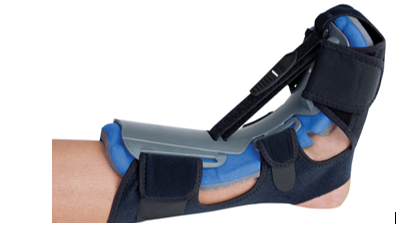
Photo 4. One of the many devices that are there to prevent the stroker foot but is this the right one? And is the danger to develop an pressure score not too great. This device pull the foot back after the push but is the control and stability enough? Every person asked for an individual measurement and approach!
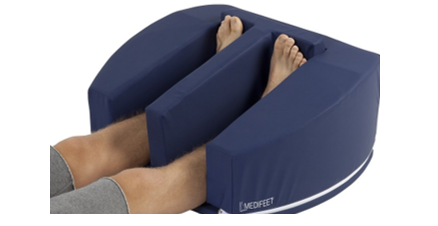
Photo 5. Look like an solution but is this an good one ?
Because when one foot move what’s happen with the other! Is the surface firm enough and stable to give stability that place the foot in the right position back and decrease the tone? This asked for control, measurements and for regular inspection on pressure score. The device on photo 5 is also used by people with an neurological degenerative disease as Parkinson, dementia in the late stage but also people that lies in an vegetative stage with an high tone [20,21].
This people often cannot move, but the amount of pressure that they produce in the legs is often very high and the feet lies in an plantar /inversion position often for long hours. The orthosis that creates more stability, can also be transformed in an push-away orthosis and that create movement and tone decrease in the whole body and thus also in the feet. [22,23]
The orthosis create stability that has influence on the tone but when we create extra movements than will this shortening further decrease and also the change on the occurrence of the pes equinus varus. The treatment rhythmic when to go over to movement-treatment, is thus very important and must also be controlled on the risk of skin pressure.

Photo 6. An person with the Parkinson disease in an stage that he has great difficulty to move in supine attitude and we see that his feet stand both in an plantar flexion position. Every time he lift his foot, the other will go in an increase plantar flexion to create an anchor for the leg in the air. In the morning his tone is so high that he cannot move on his own. We have given him an firm cushion under his feet on such an way that he is stimulated to push it away and that decrease the tone in his body. He started with increase pushing plantar flexion but this lowering the tone his whole body. After an 20 minutes his mobility in the ankles where almost normal and he was able to stand on his feet. That means that the striker foot was prevented but also that the start of the day was possible through and decrease of tone (rigidity) in his whole body. Thus, the prevention of the striker foot asked for an intervention that give an pressure against the foot sole. But which pressure/hardness is by every person different!

Photo 7. Often is this the end-position that what we see on photo 7 and that means that also sitting in an chair isn’t nice. That amount of tension in the foot is an task for everyone to prevent it go the other way!!
The prevention of the striker foot is also an job, that is for every striker foot different, but the fact that people with less selectivity through an neurological disease must use an extension synergy is the reason that there the striker foot occur. Only an good support/pressure can catch the plantar flexion and bring the foot back in the good position and that support must be use for this person for prevention of his striker foot.
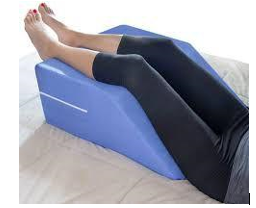
Photo 8. An example that will create pes equinus varus – striker foot, because the stability must be achieve through an plantar flexion as part of the extension of one or two legs to create stability. This is example, what fear for decubitus can do and that this will create that nasty foot that we see in photo 7. The prevention of pressure score, in this case the heel area and the striker foot are both important priority to hold the quality of life as high as possible. And that are both elements that are important for the quality of life. And both together is possible !
An solution that take care for the heel area and support the foot sole together is show in picture 1

Picture 1. Prevention of an striker foot and also take care for to many pressure on the heel area. In this example we treated an person after an severe stroke. His affected leg was hypo tone and need in the beginning support to prevent extreme exorotation in the hip joint [19.32]. The leg was unstable an lay in that extreme exhortation against the bed fence and that create an huge tone increasement in the knee flexors.
There wasn’t an stability for the not-affected leg and this create movement through the bed that harm the skin of both legs. To create stability this orthosis was make to prevent the extreme stretch on muscle and control the hip joint muscles and decrease the tone in the hamstrings of the affected leg, but also create an stability in which he now could move his not-affected leg better. Now occur an extension in the affected leg with plantar flexion in the ankle but the effect was tripart: 1. The tone in the flexors of the knee goes down and
2. The pull of the foot sole was now followed with an relaxation and place the foot in good position and 3. The skin was not so harmed. of course, asked this for an good multidisciplinary team that take care through the night with all the changes of positions that are necessary to prevent further damages.
Treatment in supine position in bed.
Treatment asked thus for an whole approach with the possibility to change the orthosis from stability support to an push-away orthosis. Because that will create movement and thus a tone decrease and ankle movements, but as in picture 1, it stabilize an person after an stroke and makes movement with his not-affected leg/side better possible, sometimes even possible.
Relation walking AFO (Ankle Foot Orthosis) - neurological disease and developmental of an pes equines varus.
The striker foot developmental can also be speeded up though an walking aid that the foot hold in the same position. The increase tone and the loss of selectivity will also her take care for an situation that the tone in the calf muscle is high and that the plantar flexion is present through more than 12 hours on an day [18, 26].
By people with an neurological disease is always important to test what the tension is in the calf muscles, because investigation has showed that sometimes the tone place the talus too far in the malleolus cave and that this give the immobilization. [24,25]
Thus, control always this.Further it is important to control people on the side-effects of statins, because the reactions by some people on muscle and foot clearances is still not clear. [27.28,29,30]
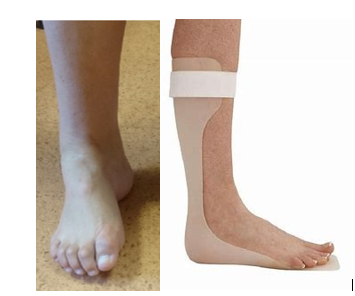
Photo 9 Photo 10
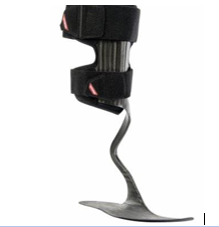
Photo 9,10 and 11. The foot on photo 9 stand in inversion and plantar flexion and is so very difficult to get load on it and walk, therefore there are AFO to set the foot stable in the shoe and make walking stable and better possible. But the two types of AFO that are presented on photo 10 and 11 will give an stable situation but no movement to hold the length of the sarcomeres and the not-contractile elements of the muscle on the right length[31]. This AFO is often wear for an great part of the day and that can therefore create an shorten amount of sarcomeres and an reversible restriction [19] that will lead to an striker foot- pes equinus varus that will inhibit the possibilities of the walking pattern in later stages and create than problems.
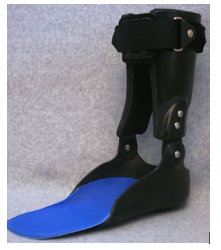
Photo 12. An example of an AFO that will take care of the length of the calf muscle through the possibility of an hinge that allow the person to walk with great step length and so stretch the calf muscle and the not-contractile elements and this is important for the walking pattern but also to prevent an striker foot on an later stage that than must be treated with redressing casting or even an operation of the Achilles tendon.
The assumption that till today still exist that lying in bed on your back with the blankets on your feet can lead to the arise of the pes equinus varus- striker foot – is nonsense and it is on the time that the nurses were not identified as the element that this striker foot arise. All team members must be aware what the cause is, of the reason that the system need so much tension in the calf muscle and that is the need to move and that this movement asked for an stable anchor. Certainly, neurological diseases must use an extension synergy to create that stability and then is there an plantar flexion and when that is permanent present than will this lead to an shortening in the muscle and tissues around the muscle and we have an striker foot. Thus, to prevent this, there must be search for an possibility that the push can be reversed so that the length stay optimal. Lifting one leg asked for an action on the other side with an extension synergy after an brain damage but also lying on your back asked for an perception of stability and when the damaged brain this perception not find will it create his own stability with all possibilities that this brain has.
This we see by people with severe neurological damage, that will also give an striker foot but also an increase risk on pressure scores through the huge amount of tension. The simple action to create on certain spots no skin-contact can lead to an decreasing of the stability and thus more tone and more pressure on the skin elsewhere.
Thus, both elements are important because they benefit both when the tone is lower. The element of the striker foot in the later/chronic stage asked for further investigation why exactly this occurs. But the element, that no movement is allow in the ankle is by some AFO’s clear and we know what the reaction is in the sarcomeres and other not-contractile tissues can be when no movement occur. The treatment that many years is prescribe -stretching- is mostly ineffective [33,34] and will never be able to hold the length optimal thus must the treatment be change so that this is be effective and the base must be movement in the ankle but always with control of the foot position so that “easy” walking is possible.
Appendix 1. Mens en Gezondheid. https://mens-en-gezondheid.infonu.nl/aandoeningen/160572-spitsvoet-of... Spitsvoet of pes equinus, oorzaak en behandeling
Citation; Oorzaken Een spastische verlamming kan ook een spitsvoet veroorzaken. Een spastische verlamming kenmerkt zich door wel kracht in de spieren te hebben, maar hier geen controle over te hebben. Er ontstaan onwillekeurige bewegingen en trillingen van de ledematen. Oorzaak voor een spastische verlamming kan aangeboren zijn, maar kan ook op latere leeftijd ontstaan zijn door schade aan de hersenen of de zenuwen. Langdurige bedrust is weer een andere veroorzaker. Hierbij kan de verpleging soms tekort schieten. Het gevolg is dat dat pezen of spieren na verloop van tijd verkorten. Maar ook kan er een te grote werking aan de spieren of pezen ontstaan. Dit zien we wanneer de patiënt op de rug ligt en de voeten gestrekt houdt. De dekens drukken de voet als het ware omlaag waardoor deze stand aan blijft houden. Een overmatige aanspanning van de spieren of de pezen zien we bij bepaalde spierziekten. De kuitspier raakt dan teveel gespannen en er ontstaat een spitsvoet. Een verkorte achillespees kan ook de veroorzaker zijn. Kinderen die veel op hun tenen lopen kunnen later ook last krijgen van een spitsvoet. Dit komt omdat hun voet deze houding aanneemt door verkorting van de achillespees. Een spitsvoet kan op iedere leeftijd ontstaan. Ook bij Multiple Sclerose (MS) zien we vaker een spitsvoet optreden, evenals een holvoet. De oorzaak van MS in onbekend, het afweersysteem zou hier een mogelijke rol in spelen. Over het algemeen kenmerkt MS zich door klachten met het lopen, het zien en het voelen. Een spitsvoet komt helaas vaker voor bij MS.
Appendix 2. OnmedaGeverifieerdhttps://www.onmeda.de/krankheiten/spitzfuss-id200621. Spitzfuß: Ursachen, Behandlung und OP bei Pes equinus - Onmeda
Citation; Zerebrale Kinderlähmung (infantile Zerebralparese, spastische Lähmung, spastisch = mit erhöhter der Muskelspannung verbunden): tritt durch ein Trauma während der Geburt auf und beinhaltet als häufigste Fehlbildung den Spitzfuß. Störungen des Nervensystems (neurologische Störungen): lähmend (paralytisch), zum Beispiel bei Halbseitenlähmung nach einem Schlaganfall oder verkrampft (spastisch), wie beispielsweise bei der Friedreich-Krankheit oder Myelodysplasie. Krankheiten, die den gesamten Organismus betreffen (sog. Systemerkrankungen): beispielsweise Bluterkrankheit (Hämophilie), bei der Einblutungen in die Wadenmuskulatur die Beschwerden auslösen. Störungen nach Verletzungen (posttraumatische Störungen): Verletzungen des Unterschenkels im Bereich des Sprunggelenks oder des ganzen Fußes, die zu einer verkürzten Achillessehne führen. Mechanische Ursachen: zum Beispiel längere Bettlägerigkeit, bei welcher der Fuß nicht abgestützt ist, oder Verbände, die den Fuß längere Zeit in Spitzfußstellung fixieren
Appendix 3. Physiopediahttps://www.physio-pedia.com/Equinus_defo…Equinus Deformity-Physiopedia Citation: Equinus is frequently caused by tightness in the calf muscles (the soleus and/or gastrocnemius muscles) or the Achilles tendon. Some people may have this feature congenitally (existing at birth) or inherited it. Others develop this tightness as a result of wearing high-heeled shoes frequently, being in a cast or using crutches. Other contributing factors include diabetes or having a shorter leg than other. The patient may develop equinus if a bone or bone fragment restricts movement of the ankle (for instance, after an ankle injury). Rarely, calf muscular spasms can induce equinus and may be a symptom of an underlying neurologic condition.
Appendix 4
Maynou C, Szymanski C, Thiounn A. The adult cavus foot. EFORT Open Rev. 2017 May 11;2(5):221-229. doi: 10.1302/2058-5241.2.160077. PMID: 28630759; PMCID: PMC5467681. Citation: However, in recent years, a mild variation of the cavovarus deformity has been increasingly observed to exist without an identifiable underlying deficit. In our experience, this primary pes cavus (idiopathic) is diagnosed by elimination in more than half the cases and most authors believe that it is the consequence of a latent neurological disorder. Thus, neurological disorders must be looked for in the family history and clinical and electrophysiologica evaluation of the patient is necessary to eliminate any very subtle neurological lesion.
Appendix 5.
Lawrence SJ, Botte MJ. Management of the adult, spastic, equinovarus foot deformity. Foot Ankle Int. 1994 Jun;15(6):340-6. doi: 10.1177/107110079401500610. PMID: 8075766.Citation; Management of the persistent, acquired, neurogenic equinovarus foot may be a confounding rehabilitative dilemma. Victims of cerebrovascular accidents and traumatic brain injury commonly develop this neurogenic deformity. The plantarflexed and inverted foot position results from an imbalance of forces about the hindfoot due to exaggerated muscle tone and hyperactive stretch reflexes. Significant functional impairment may ensue if a plantigrade foot position cannot be achieved and maintained.